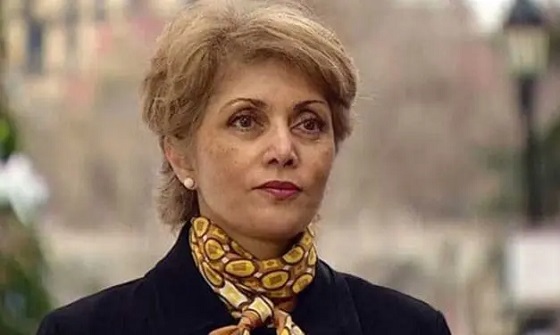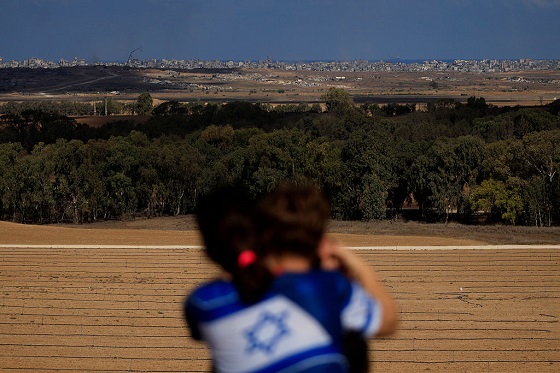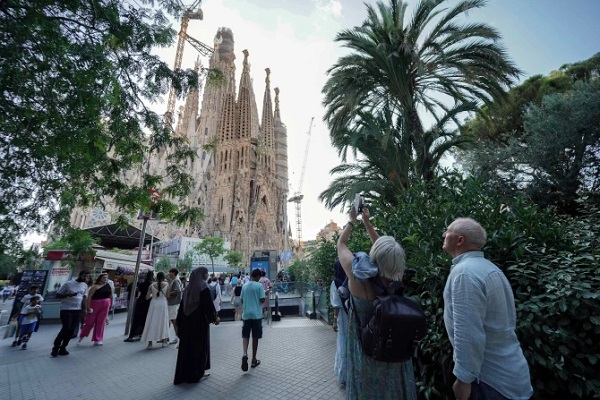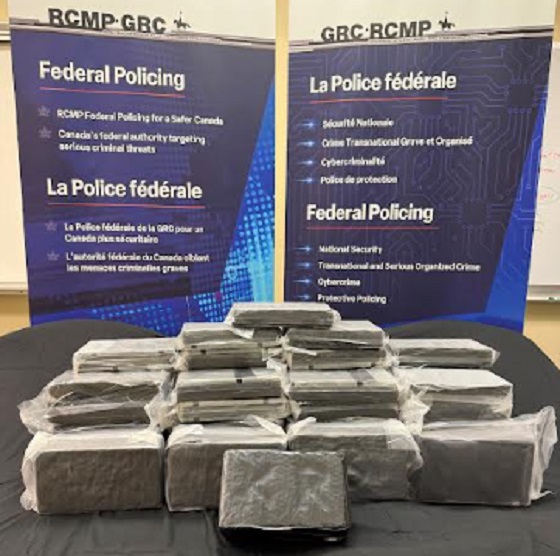Alberta
The world is full of options

The world is full of options.
Keep dreaming or cut your hopes? With opinions dominating every aspect of life, whose judgment can you trust? Should we step outside or wait until the siren stops wailing?
Right now, almost at this moment, the National Hockey League is asking those questions: push aside all obstacles and restart the abbreviated current season, or accept that games without fans won’t provide the answer, and the emotional, fan-driven thrills, that supporters truly want? Those questions are front and centre for commissioner Gary Bettman and his paid advisers, as well as for all of us who count on sports – especially hockey, even in what should be baseball season – to fill essential blanks in our schedules. Another group waits more anxiously than ticket-buyers or big-screen addicts possibly could.
The players, of course.
For many, their future next season – even beyond whatever shape their game takes in the short term – is transcendent. Those who have endured a difficult partial season obviously have more concerns than those whose team standings and personal statistics are beyond rebuke. But that, in every sport, is a minority. Far more common are those who cannot tell what next year will bring.
It’s entirely possible that one such man will be Mark Pysyk, the former Edmonton Oil Kings captain who became a first-round draft choice of the Buffalo Sabres in the 2010 entry draft and later was traded to the Florida Panthers, where his career has been solid but, as he would clearly admit, not spectacular.
Pysyk holds a high place in Oil Kings junior history. Although his profile never reached the level of Hall-of-Famers Johnny Bucyk or Norm Ullman, nor Al Hamilton and coaching great Pat Quinn and Hall-of-Fame builder Glen Sather, he was the first prospect to don an Edmonton uniform when the franchise returned to organized hockey in 2007 after a long period of ugly sports politics kept this community on the outside looking in.
Pysyk played only 14 Western Hockey League games that season but was a junior star from then on. After Buffalo grabbed him, he played part of one season in the American Hockey League. Since then, he has been fully employed, except for three games in Rochester while recovering from an injury in the 2015-16 season, shortly before he became part of a draft day trade that sent him to the Florida Panthers.
In the next two seasons at his sunny South home, Pysyk performed almost exactly as before: go to work, do the job, get ready for practice tomorrow. seven goals and 33 points in 164 regular-season games; impressive enough, he was, to remain protected in the Las Vegas expansion draft. Then, last season, it was down to one goal and 10 points in 70 games. Word leaked that he would be available for the right trade offer.
Some idle time at the start of this season could not have been unexpected. New head coaches – Joel Quenneville, in this case – always bring change. Blueliners Aaron Ekblad and Anton Stralman played longer minutes. Mike Matheson and MacKenzie Weegar contributed to Pysyk’s extra rest. Then came the change that provided a whole new picture – at least potentially.
Pysyk became a right winger. He scored nine goals – easily his best ever – and the Panthers remained, somehow, as playoff possibilities. His defensive abilities helped keep opposition scoring chances down while this third (sometimes fourth) line improved the offence.
That happy collection of events certainly has presented new possibilities. Will he be a Panther next season? Will he be a forward or a defenceman? Is there any chance that the astute Quenneville saw something other analysts missed before Pysyk arrived.
Eventually, this quality young man will use his ability and his character to answer those questions.
Alberta
Gondek’s exit as mayor marks a turning point for Calgary

This article supplied by Troy Media.
The mayor’s controversial term is over, but a divided conservative base may struggle to take the city in a new direction
Calgary’s mayoral election went to a recount. Independent candidate Jeromy Farkas won with 91,112 votes (26.1 per cent). Communities First candidate Sonya Sharp was a very close second with 90,496 votes (26 per cent) and controversial incumbent mayor Jyoti Gondek finished third with 71,502 votes (20.5 per cent).
Gondek’s embarrassing tenure as mayor is finally over.
Gondek’s list of political and economic failures in just a single four-year term could easily fill a few book chapters—and most likely will at some point. She declared a climate emergency on her first day as Calgary’s mayor that virtually no one in the city asked for. She supported a four per cent tax increase during the COVID-19 pandemic, when many individuals and families were struggling to make ends meet. She snubbed the Dec. 2023 menorah lighting during Hanukkah because speakers were going to voice support for Israel a mere two months after the country was attacked by the bloodthirsty terrorist organization Hamas. The
Calgary Party even accused her last month of spending over $112,000 in taxpayers’ money for an “image makeover and brand redevelopment” that could have benefited her re-election campaign.
How did Gondek get elected mayor of Calgary with 176,344 votes in 2021, which is over 45 per cent of the electorate?
“Calgary may be a historically right-of-centre city,” I wrote in a recent National Post column, “but it’s experienced some unusual voting behaviour when it comes to mayoral elections. Its last three mayors, Dave Bronconnier, Naheed Nenshi and Gondek, have all been Liberal or left-leaning. There have also been an assortment of other Liberal mayors in recent decades like Al Duerr and, before he had a political epiphany, Ralph Klein.”
In fairness, many Canadians used to support the concept of balancing their votes in federal, provincial and municipal politics. I knew of some colleagues, friends and family members, including my father, who used to vote for the federal Liberals and Ontario PCs. There were a couple who supported the federal PCs and Ontario Liberals in several instances. In the case of one of my late
grandfathers, he gave a stray vote for Brian Mulroney’s federal PCs, the NDP and even its predecessor, the Co-operative Commonwealth Federation.
That’s not the case any longer. The more typical voting pattern in modern Canada is one of ideological consistency. Conservatives vote for Conservative candidates, Liberals vote for Liberal candidates, and so forth. There are some rare exceptions in municipal politics, such as the late Toronto mayor Rob Ford’s populistconservative agenda winning over a very Liberal city in 2010. It doesn’t happen very often these days, however.
I’ve always been a proponent of ideological consistency. It’s a more logical way of voting instead of throwing away one vote (so to speak) for some perceived model of political balance. There will always be people who straddle the political fence and vote for different parties and candidates during an election. That’s their right in a democratic society, but it often creates a type of ideological inconsistency that doesn’t benefit voters, parties or the political process in general.
Calgary goes against the grain in municipal politics. The city’s political dynamics are very different today due to migration, immigration and the like. Support for fiscal and social conservatism may still exist in Alberta, but the urban-rural split has become more profound and meaningful than the historic left-right divide. This makes the task of winning Calgary in elections more difficult for today’s provincial and federal Conservatives, as well as right-leaning mayoral candidates.
That’s what we witnessed during the Oct. 20 municipal election. Some Calgary Conservatives believed that Farkas was a more progressive-oriented conservative or centrist with a less fiscally conservative plan and outlook for the city. They viewed Sharp, the leader of a right-leaning municipal party founded last December, as a small “c” conservative and much closer to their ideology. Conversely, some Calgary Conservatives felt that Farkas, and not Sharp, would be a better Conservative option for mayor because he seemed less ideological in his outlook.
When you put it all together, Conservatives in what used to be one of the most right-leaning cities in a historically right-leaning province couldn’t decide who was the best political option available to replace the left-wing incumbent mayor. Time will tell if they chose wisely.
Fortunately, the razor-thin vote split didn’t save Gondek’s political hide. Maybe ideological consistency will finally win the day in Calgary municipal politics once the recount has ended and the city’s next mayor has been certified.
Michael Taube is a political commentator, Troy Media syndicated columnist and former speechwriter for Prime Minister Stephen Harper. He holds a master’s degree in comparative politics from the London School of Economics, lending academic rigour to his political insights.
Troy Media empowers Canadian community news outlets by providing independent, insightful analysis and commentary. Our mission is to support local media in helping Canadians stay informed and engaged by delivering reliable content that strengthens community connections and deepens understanding across the country
Alberta
From Underdog to Top Broodmare

WATCH From Underdog to Top Broodmare (video)
Executive Producers Jeff Robillard (Horse Racing Alberta) and Mike Little (Shinelight Entertainment)
What began as an underdog story became a legacy of excellence. Crackers Hot Shot didn’t just race — she paved the way for future generations, and in doing so became one of the most influential producers the province has known.
The extraordinary journey of Crackers Hot Shot — once overlooked, now revered — stands as one of Alberta’s finest success stories in harness racing and breeding.
Born in humble circumstances and initially considered rough around the edges, Crackers Hot Shot overcame long odds to carve out a career that would forever impact the province’s racing industry. From a “wild, unhandled filly” to Alberta’s “Horse of the Year” in 2013, to producing foals who carry her spirit and fortitude into future generations.
Her influence ripples through Alberta’s racing and breeding landscape: from how young stock are prepared, to the aspirations of local breeders who now look to “the mare that did it” as proof that world-class talent can emerge from Alberta’s paddocks.
“Crackers Hot Shot, she had a tough start. She wasn’t much to look at when we first got her” — Rod Starkewski
“Crackers Hot Shot was left on her own – Carl Archibald heard us talking, he said ‘I’ll go get her – I live by there’. I think it took him 3 days to dig her out of the snow. She was completely wild – then we just started working on her. She really needed some humans to work with her – and get to know that people are not scary.” — Jackie Starkewski
“Crackers Hot Shot would be one of the top broodmares in Albeta percentage wise if nothing else. Her foals hit the track – they’re looking for the winners circle every time.” — Connie Kolthammer
Visit thehorses.com to learn more about Alberta’s Horse Racing industry.
-

 Alberta2 days ago
Alberta2 days agoFrom Underdog to Top Broodmare
-

 International2 days ago
International2 days agoNetanyahu orders deadly strikes on Gaza with over 100 dead despite ceasefire deal
-

 Business2 days ago
Business2 days agoCanada’s economic performance cratered after Ottawa pivoted to the ‘green’ economy
-

 Business1 day ago
Business1 day agoBank of Canada governor warns citizens to anticipate lower standard of living
-

 Business2 days ago
Business2 days agoCanadians paid $90 billion in government debt interest in 2024/25
-

 International1 day ago
International1 day agoUS Reportedly Weighing Military Strikes On Narco Targets Inside Venezuela
-

 International1 day ago
International1 day agoSagrada Familia Basilica in Barcelona is now tallest church in the world
-

 Agriculture1 day ago
Agriculture1 day agoCloned foods are coming to a grocer near you










